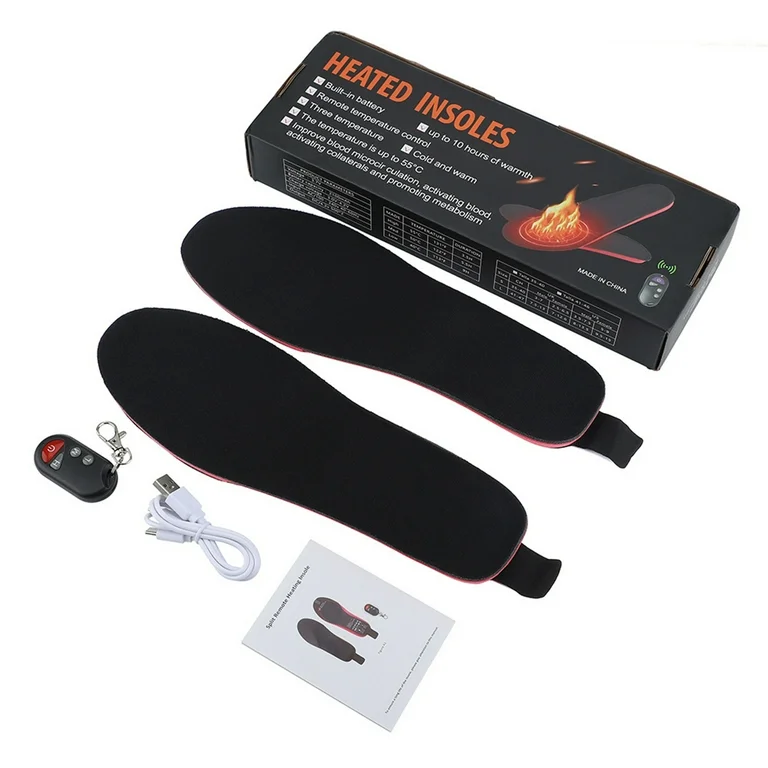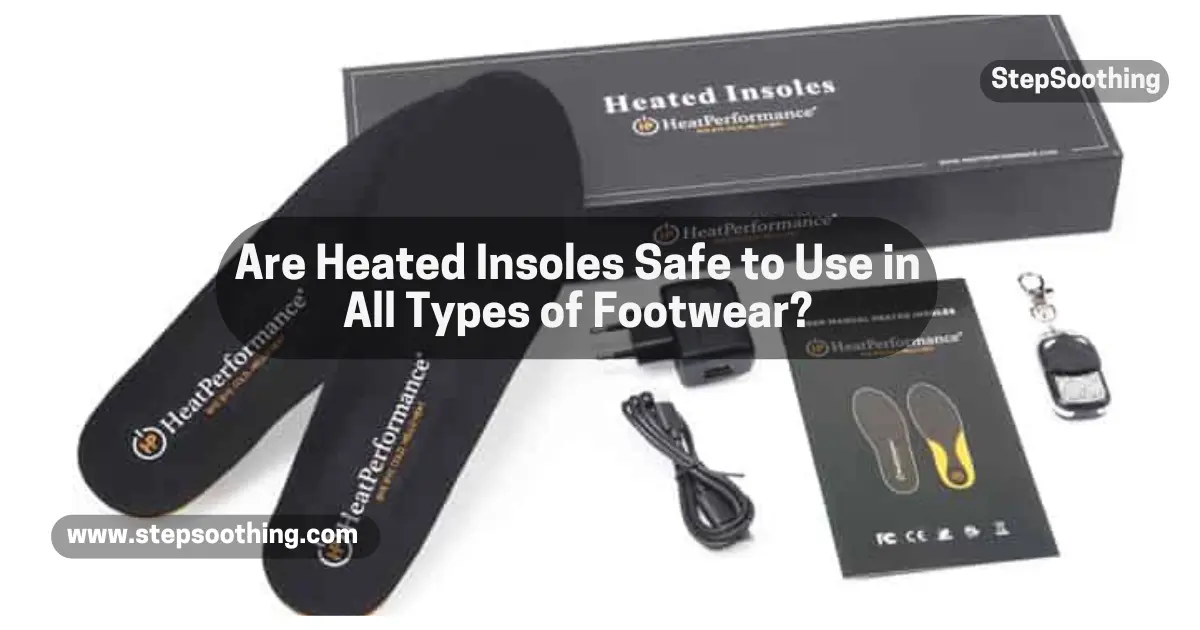Heated insoles are a great way to keep your feet warm during cold weather, especially if you’re outdoors for long periods. They are often used in daily wear, walking, and outdoor activities, and are designed with features like temperature control, cushioning, and arch support to maintain foot health and comfort. These battery-powered devices usually run on a lithium battery, and many include smart heat settings, adjustable settings, and safety features such as automatic shut-off or heat distribution sensors. Still, a common concern remains: Are Heated Insoles Safe to Use in All Types of Footwear? Understanding how they interact with different shoe types is essential for safe and effective use. Learn more: What are heated insoles, and how do they work?
In my own experience using electric insoles during hikes and commutes in winter, I’ve found that design, material quality, and proper usage guidelines matter more than just the brand name. Not all models fit every footwear type, and using them correctly based on product instructions is key to safe and effective performance. Understanding your individual needs and matching them to the right model with the right insole features is critical for safe usage.
Heated Insoles: Safety, Battery Life & Compatibility Tips

Which Shoes Are Compatible with Heated Insoles?
Not every shoe is suitable for heated insoles. Footwear compatibility depends on the space available inside the shoe and how well it handles heat. Hiking boots, ski boots, boots, and casual shoes that offer enough room and insulation are ideal for safe use. These provide a better custom fit, more even heat distribution, and improved comfort over time. On the other hand, using insoles in tight fitting shoes like sneakers, orthopedic shoes, or slippers might cause discomfort or overheating.
It’s also important to perform a compatibility check before use. If your shoes don’t allow air to circulate, there’s a risk of burns due to trapped heat. For waterproof shoes, ensure the insoles offer proper waterproofing to avoid moisture exposure, which could lead to short circuits. Specific shoes need specific types of insoles, so always match your intended use with what the insole is made for. A more detailed comparison can be found in Heated Insoles vs Heated Socks.
What Makes Heated Insoles Safe or Unsafe?
The safety of heated insoles depends on multiple factors. Poor construction, low-quality materials, or the absence of safety certifications can all lead to risks like burns, overheating, or electrical failures. Features like temperature regulation, adjustable settings, and electrical safety shut-offs are essential. Make sure to follow proper usage instructions, especially when using the insoles in enclosed or non-breathable footwear.
Also, be cautious about battery safety. A damaged or poorly made lithium battery could leak or overheat. Always recharge the battery safely using the correct cable, and never ignore signs of damage. Look for models with verified safety features and brand support that includes warranty and clear return policy guidelines. From what I’ve seen, these details often make the difference between a reliable product and a potentially risky one.
Materials and Shoe Construction Matter
The material quality of your shoes plays a huge role in determining if heated insoles can be used safely. For example, mesh shoes are breathable but may not retain heat well. Leather boots trap warmth but can cause overheating if worn too long with high heat levels. Shoes made with PVC or synthetic materials may deform or retain moisture, which creates safety concerns.
From personal trial and error, I recommend checking whether your shoes offer good insulation, have enough room for sizing options, and don’t press tightly on the insole. Shoes that allow airflow and proper foot support will result in a better user experience. Don’t force insoles into shoes that aren’t made for them, as this compromises both comfort and performance.
Special Considerations for Health & Safety
People with certain health conditions should be especially careful. If you have diabetes, poor circulation, or suffer from foot pain, consult your doctor before using heated insoles. These conditions may reduce your sensitivity to temperature, which increases the risk of burns or pressure sores during prolonged use.
Elderly users or those with mobility issues should choose insoles with clear product instructions, safe usage alerts, and easy to use adjustable settings. Reading customer reviews can help you understand how different users respond to various brands and models. Features like ergonomic design and tested durability will help ensure a longer lasting product backed by solid warranty coverage.
Care, Maintenance & Best Practices
To get the best out of your heated insoles, follow the usage guidelines in the user manual closely. Always recharge or replace batteries as recommended. Never expose your insoles to moisture exposure or dry them using direct heat sources. I once ruined a good pair by putting them too close to a heater after a rainy day hike a costly mistake.
Stick to best practices: clean with a damp cloth, avoid bending the electronics, and test them in your shoes before daily use. Remove the insoles when indoors or when they’re not needed to prevent unnecessary battery usage. And most importantly, only use the insoles in suitable footwear and suitable conditions based on your individual needs.
People Mostly Asked
Can I use heated insoles in any type of shoe?
Heated insoles can be used in many footwear types such as hiking boots, ski boots, and casual shoes, but may not be ideal for tight sneakers, slippers, or shoes with limited space. Always perform a compatibility check and follow the user manual for proper fit and safe usage.
What safety features should I look for in heated insoles?
Choose insoles with temperature control, adjustable settings, overheating protection, and safety certifications like CE or RoHS. A high quality lithium battery with built in electrical safety and automatic shut off greatly reduces health concerns and improves battery safety.
Are heated insoles safe for people with diabetes or foot problems?
If you have diabetes, poor circulation, or foot pain, consult a doctor before using battery powered or electric insoles. These conditions may reduce sensitivity and increase the risk of burns. Always follow medical advice and use models designed for foot health and thermal protection.
Can heated insoles be used in wet conditions?
Only use heated insoles labeled as waterproof or those with proper waterproofing layers. Moisture exposure can damage the electronics or cause short circuits. Follow all product instructions, and never use insoles in wet shoes unless the manufacturer confirms suitable conditions for use.
How long do heated insoles last, and can I replace the batteries?
Most high-quality insoles last several months to years depending on daily use and maintenance. Recharge the lithium battery using the recommended method, and replace them if they no longer hold a charge. Always check warranty coverage and return policy before purchase to ensure product quality and reliability. Learn more: How long does the battery last on heated insoles?



